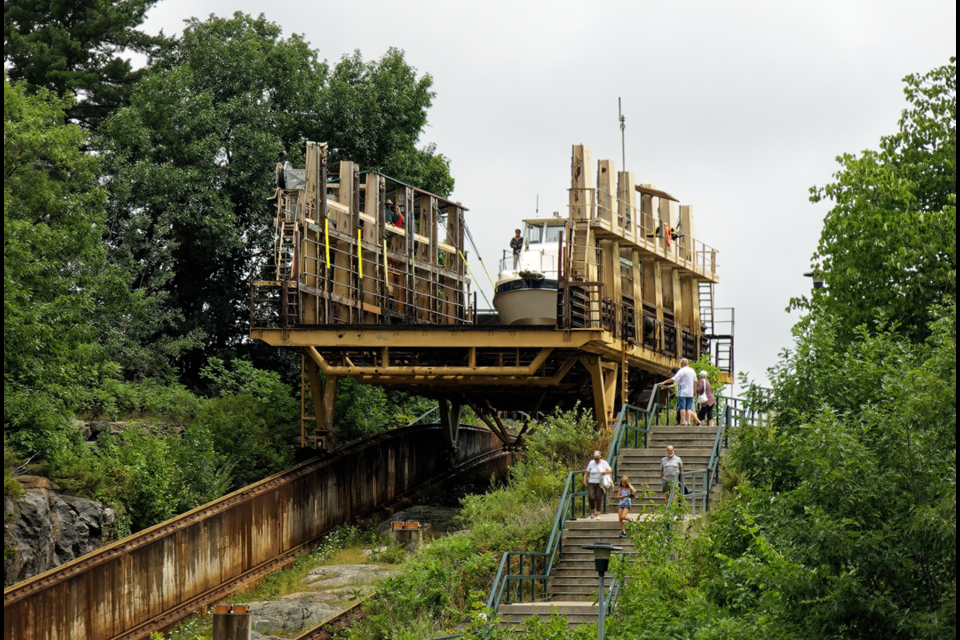NEWS RELEASE
OMAH HISTORY COMMITTEE
*************************
Charlie Ellins knows a thing or two about the Trent-Severn Waterway (TSW). He shared his passion for and knowledge of the waterway recently via Zoom for the Orillia Museum of Art and History’s (OMAH) History Speaker Series.
The TSW has been a big part of Ellins’s life since childhood. He told the story about the history of the TSW and treated us to a travelogue about the unique locks and places along its route.
Indigenous peoples have played a vital role influencing the development and natural balance of the waterway. The water route was key to the fur trade and the lumber industry, and by harnessing the water power, mill towns grew up along the TSW. The waterway expanded as timber barons, farmers, merchants and commercial travellers bought passage from town to town.
The railroad was built and it stretched its tracks into this part of the country, replacing the TSW as a major transportation route. About 1918, the TSW became an ‘unwanted child’ of the government. In the last four decades, though, the government has spent millions bringing the system up-to-date, making it the fully navigable system of locks, dams and man-made canals it is today.
The canals are popular waterways that cater to recreational boaters, including canoeists and kayakers, as well as land-based visitors. Ellins shared his memories day-tripping on the TSW, cruising through to the Bobcaygeon Lock, Fenelon Falls, Kirkfield, Lock 42 on the Severn River near Washago, and Lock 44, the Big Chute Marine Railway that connects the Severn River to Georgian Bay, to a name a few.
Ellins explained people can take interesting day road trips to see the various locks in action and to read the historic plaques at the locks that give information of their history and the interesting towns and villages along the route. It is a National Historic Site in our area and is ours to learn about and enjoy.
Ellins recommended a book about the TSW, A Respectable Ditch: A History of the Trent-Severn Waterway, 1833-1920, written by James T. Angus, which is available at the Orillia Public Library, if you want to learn more about the history of the waterway.
The OMAH History Committee is grateful to Ellins for sharing his intimate knowledge of and passion for the Trent-Severn Waterway and for encouraging us to go out and enjoy it.
If you missed his talk, click here to access OMAH’s YouTube channel to hear a recording of the talk.
Fall OMAH History Speaker Series
The OMAH History Speaker Series is on hiatus for the summer and resumes in September.
Sept. 21: Lori Oschefski — Home Children Canada, Breaking the Silence
Oct. 19: Jayne Poolton-Turvey — The Dieppe Raid, 80 Years of Tragedy and Tribulation
Admission is free, but donations to OMAH are appreciated.
OMAH Carmichael Art History Lecture fundraiser
Nov. 16: Guest speaker is award-winning author Douglas Hunter — Jackson’s Wars: A.Y. Jackson, the Birth of the Group of Seven, and the Great War
Tickets are $10 per person. Don’t miss it.
Click here to register for the History Speaker Series and the Carmichael Art History Lecture fundraiser or call Monica at 705-326-2159 or email [email protected].
*************************
